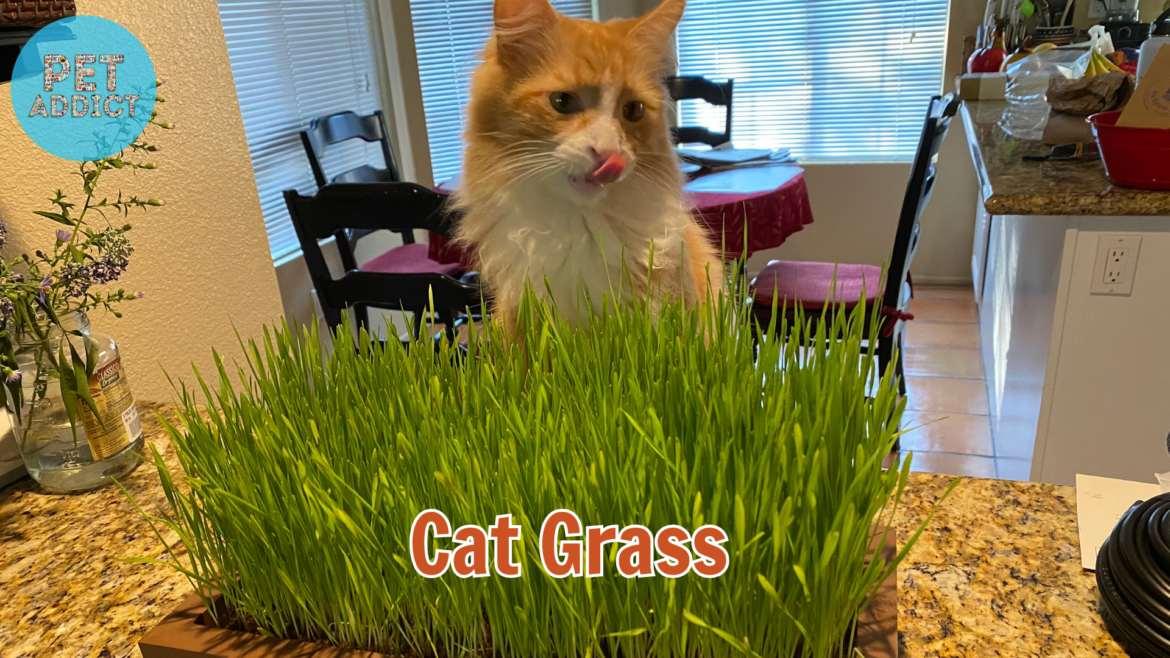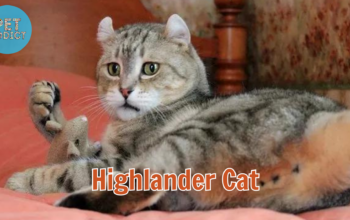As a cat owner, you have probably noticed your feline friend’s fascination with grass. Whether it’s in your backyard or a potted plant indoors, cats seem irresistibly drawn to it. This behavior may seem curious, but it has a purpose. Cat grass, also known as “cat greens” or “kitty grass,” serves as a valuable addition to your cat’s diet and overall well-being. In this comprehensive guide, we will delve into the world of cat grass, its benefits, and the various types available to enhance your cat’s health and happiness.
PetAddict.net – The best place where you can find everything about your pet!
Understanding Cat Grass
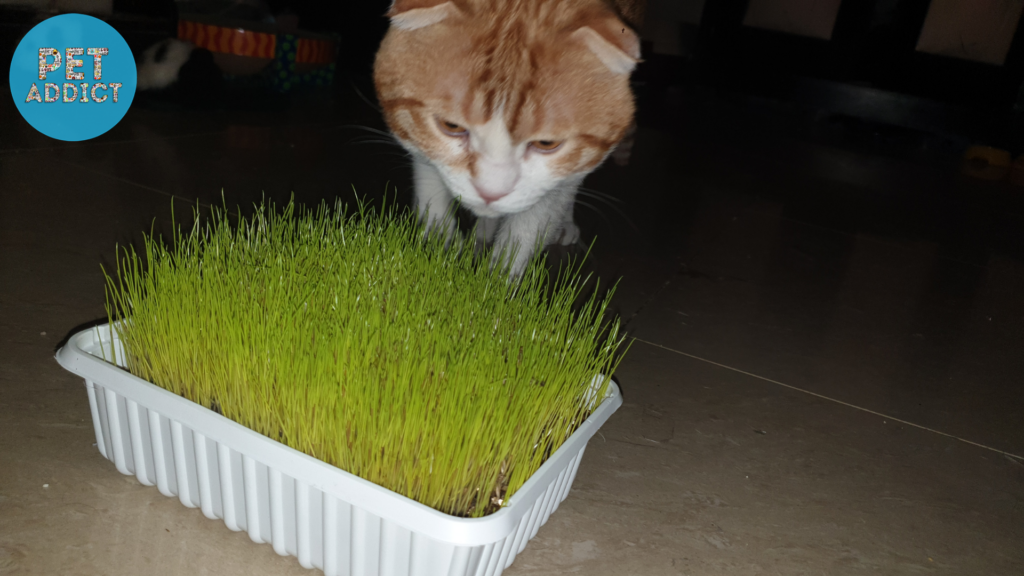
What is Cat Grass?
Cat grass refers to specific types of grass that are safe for felines to consume. It typically includes varieties like wheatgrass, oat grass, and barley grass. These grasses are rich in nutrients and fibers, which makes them beneficial for your cat’s digestive health.
Why Do Cats Eat Grass?
The act of eating grass is instinctive for cats. While the exact reason is not entirely clear, several theories exist. One common belief is that cats eat grass to aid in removing hairballs from their stomachs. The grass acts as a natural laxative, helping the cat to expel hairballs more easily. Another theory suggests that cats eat grass to supplement their dietary needs, especially for certain vitamins and minerals.
Benefits
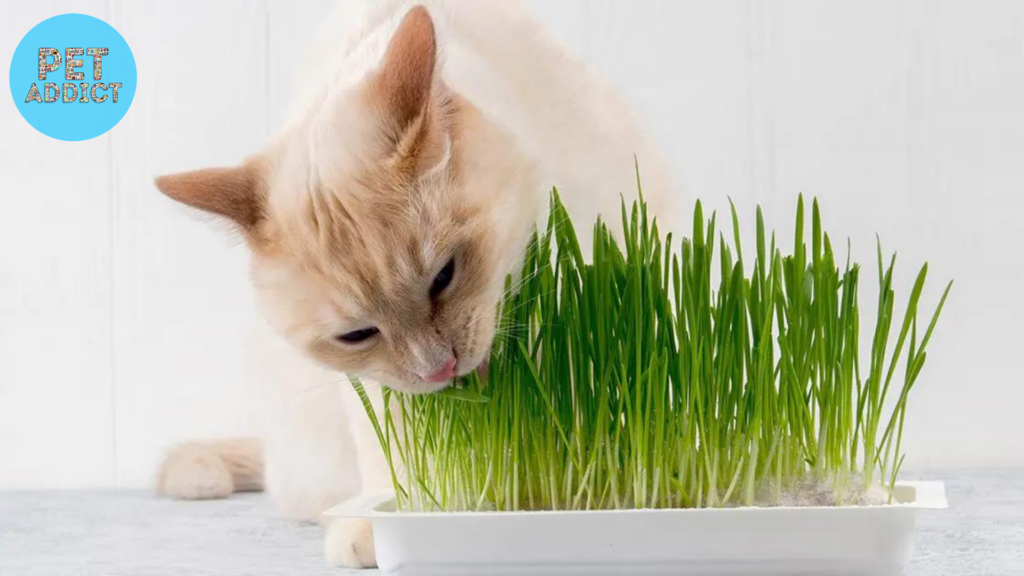
Digestive Health
Cat grass plays a crucial role in promoting healthy digestion in cats. The fibers in grass help to move ingested material through the digestive system, reducing the risk of constipation and other gastrointestinal issues. Moreover, grass can act as a natural hairball remedy, assisting in the passage of hairballs through the cat’s system.
Dental Health
Chewing on cat grass can also contribute to better dental hygiene for your cat. The abrasive action of grass helps remove plaque and tartar from the teeth, reducing the chances of dental problems and gum disease.
Stress Relief
For many cats, nibbling on grass has a calming effect. It can be a natural stress reliever, helping to alleviate anxiety and promote relaxation. This is especially beneficial for indoor cats who may experience boredom or restlessness.
Physical and Mental Stimulation
Cat grass offers not only physical exercise but also mental stimulation for indoor cats. The act of hunting and “grazing” on grass taps into a cat’s natural instincts, providing enrichment and preventing boredom.
Types of cat grass
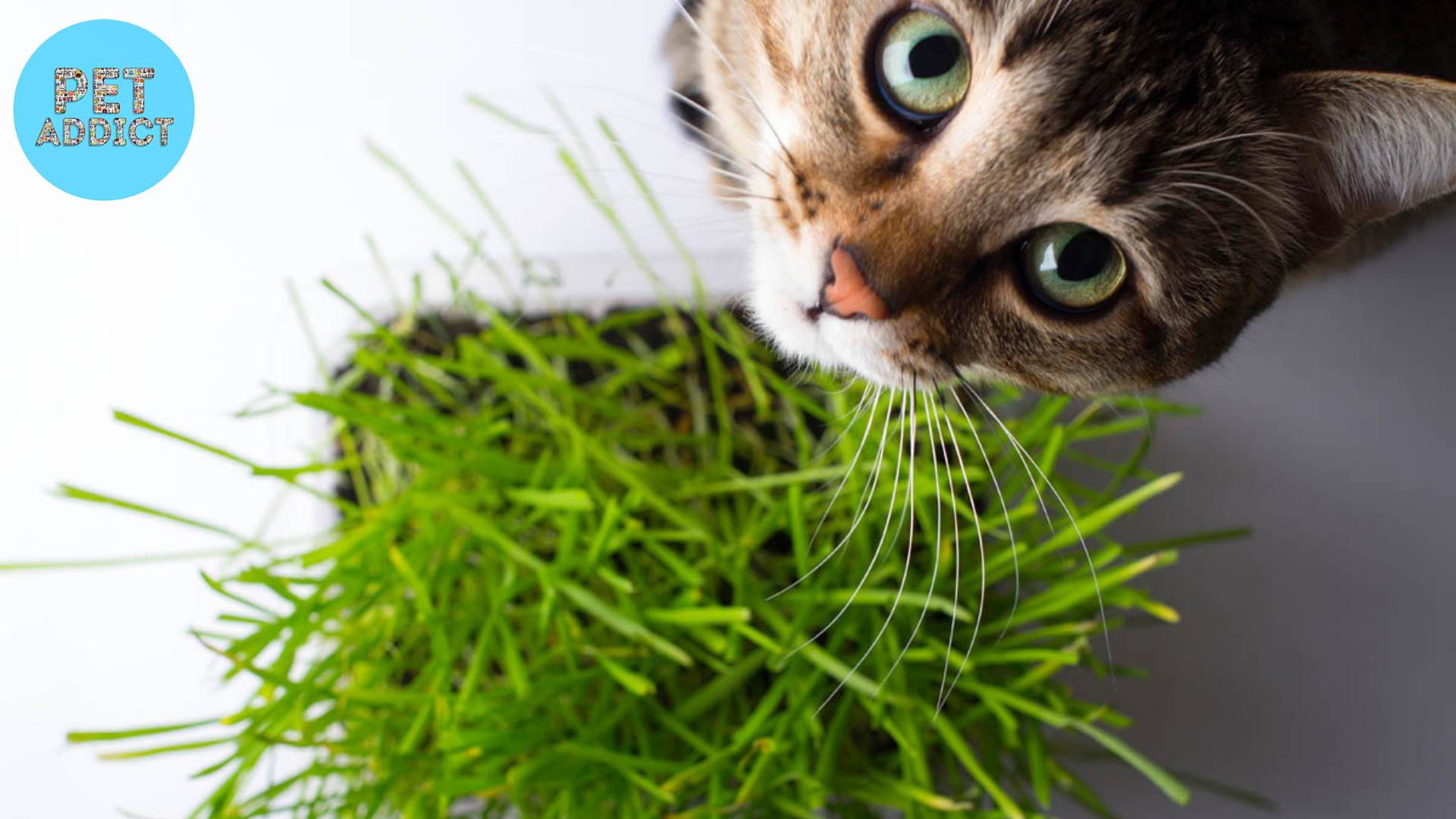
Common Grass Varieties
Several grass varieties are suitable for cats. Wheatgrass, oat grass, and barley grass are among the most popular choices. Wheatgrass is known for its high nutritional content, including vitamins A, B, C, and E, as well as essential minerals. Oat grass is gentle on the digestive system and easy to grow. Barley grass is rich in antioxidants and helps promote a healthy coat.
Growing Grass at Home
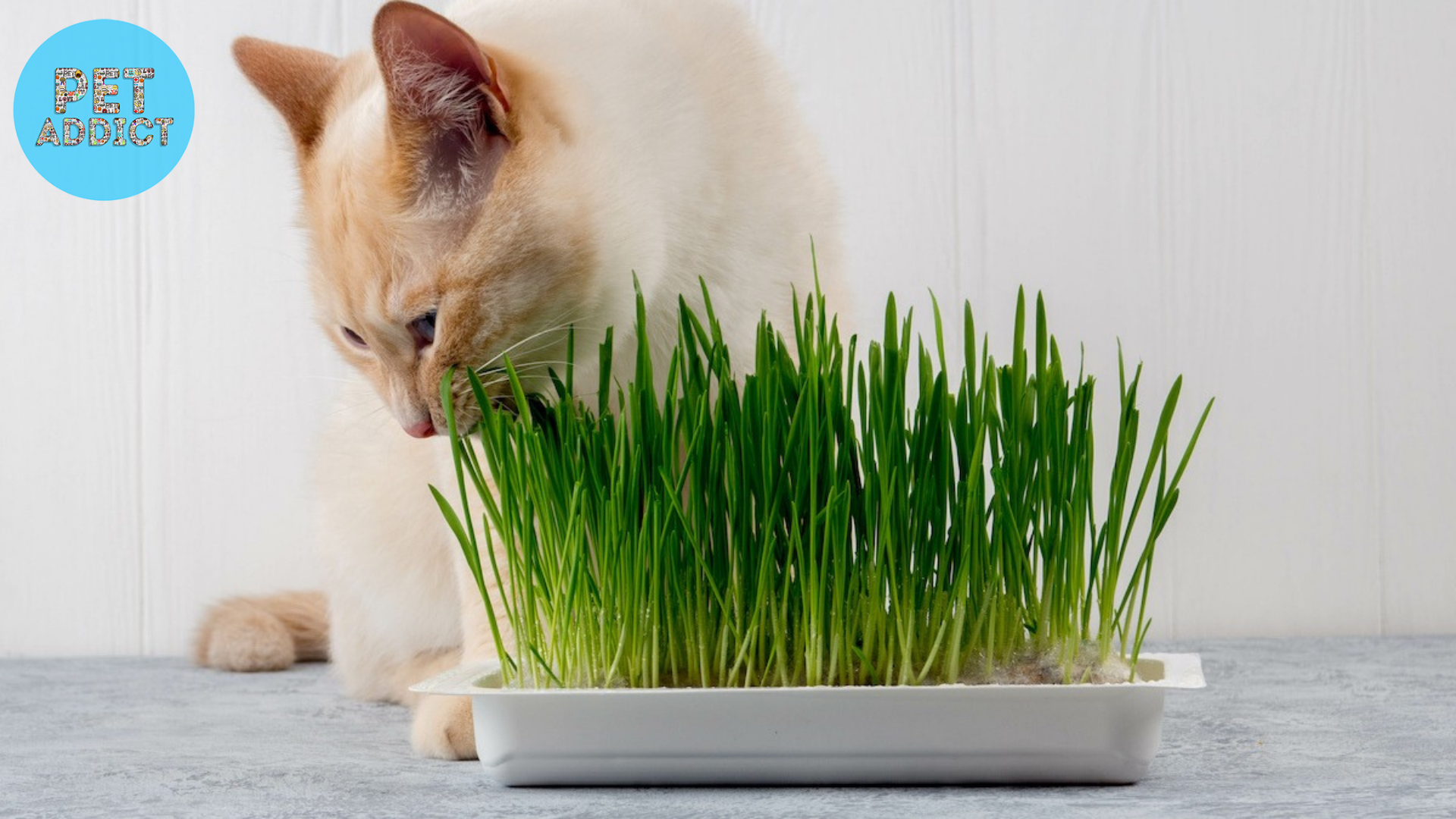
Growing grass at home is a simple and rewarding process. Purchase grass seeds from pet stores or online retailers and sow them in a shallow container filled with potting soil. Water the seeds regularly, and within a week or two, your cat will have a fresh supply of grass to enjoy.
Ready-to-Use Cat Grass Products
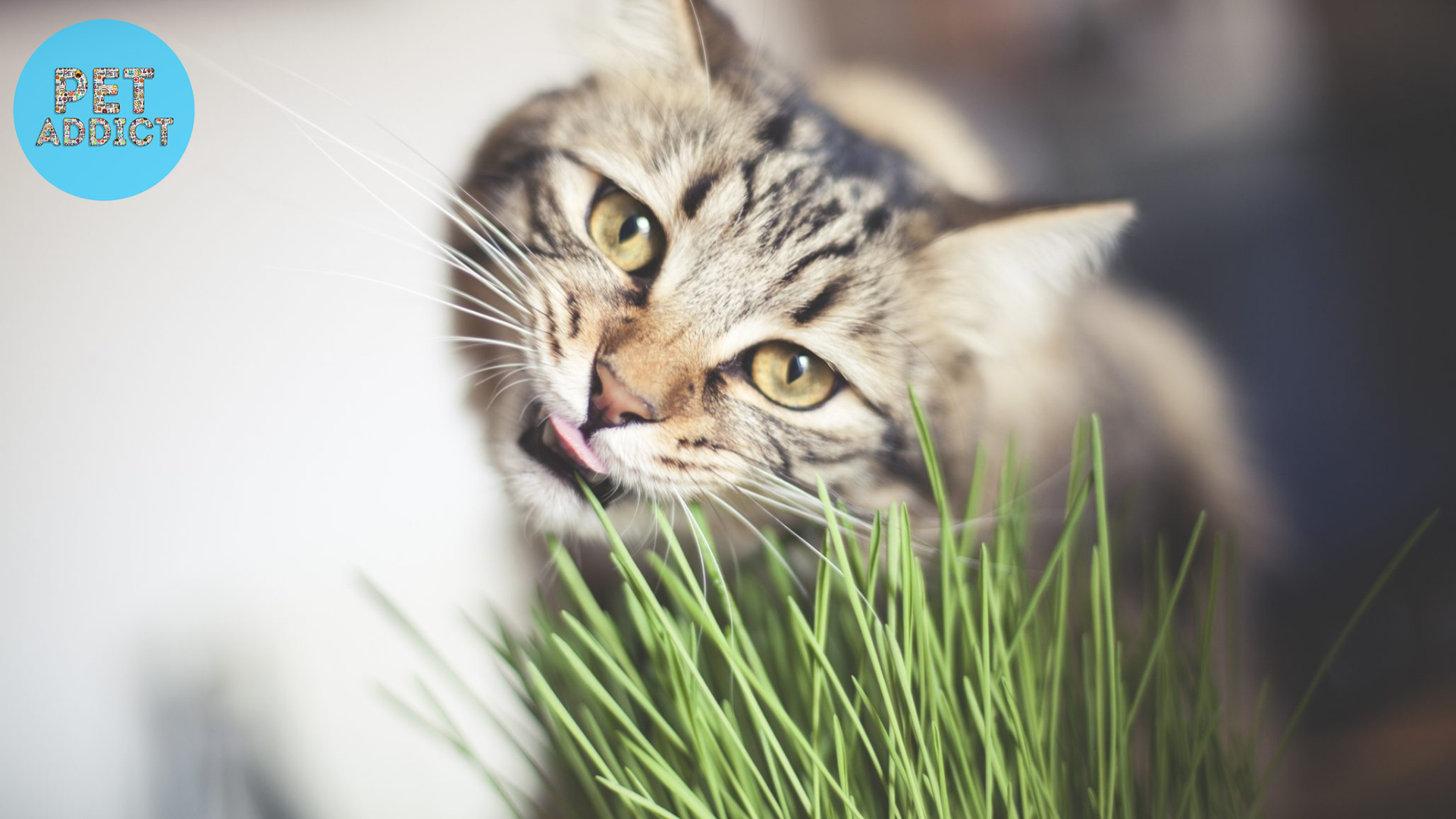
For cat owners with limited time or resources, commercial grass products are available in the market. These products typically come in pre-seeded containers or trays, allowing for easy and instant gratification for your feline friend.
Introducing to Your Cat
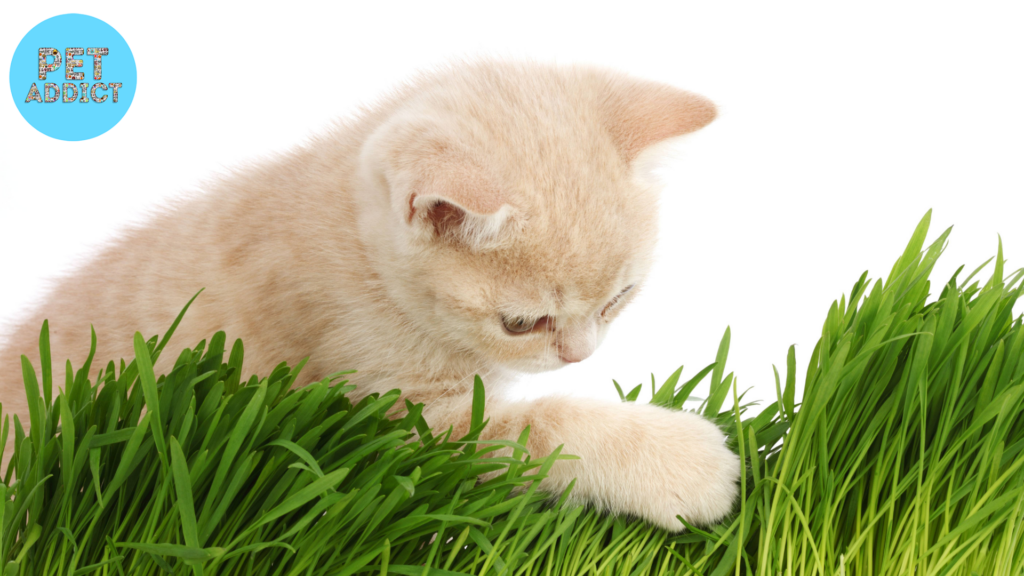
How to Introduce Cat Grass
When introducing grass to your cat, place the grass container in an accessible and familiar area. Allow your cat to explore the grass at their own pace. Some cats may take to it immediately, while others may need some time to warm up to the idea. Offer positive reinforcement and praise when your cat shows interest in the grass.
Grass and Outdoor Cats
Outdoor cats may also benefit from consuming natural grass. However, ensure that the outdoor environment is safe and free from pesticides or toxic plants that could harm your cat.
Maintaining

Watering and Care
To ensure the longevity of grass, water it regularly and keep it in a well-lit area. Avoid overwatering, as it can lead to mold growth. Trim the grass periodically to promote fresh growth.
Replanting and Rotating Cat Grass
As your cat consumes the grass, it may become sparse. To maintain a continuous supply of grass, replant new batches regularly and rotate containers to ensure your cat always has access to fresh grass.
Cat Grass and Indoor Environments
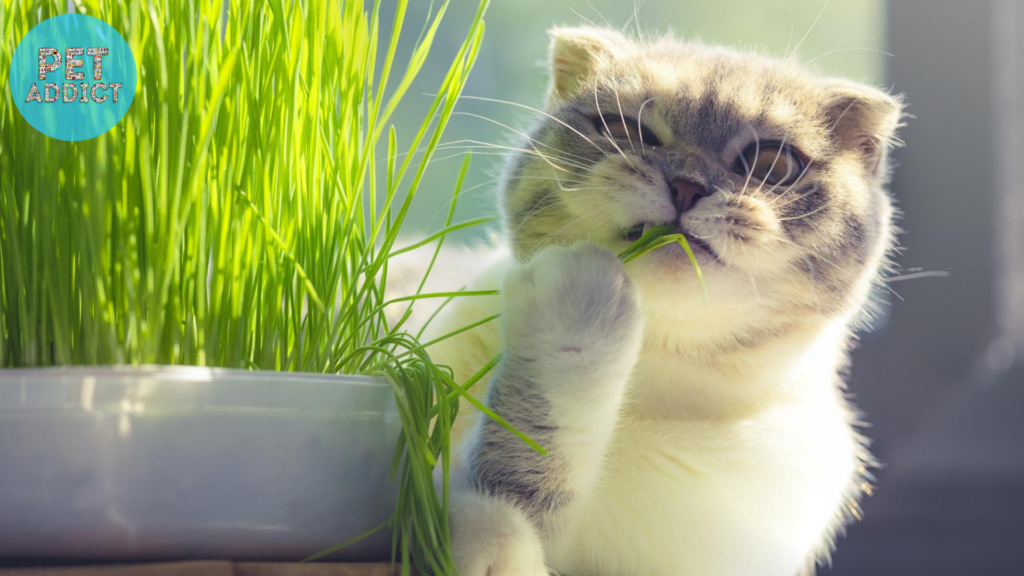
Cat Grass and Houseplants
If you have houseplants indoors, you may wonder if cat grass will interfere with them. To prevent any adverse effects on your indoor plants, consider placing the grass in a separate area or using hanging containers that are out of reach.
Alternative to Destructive Behavior
For cats that exhibit destructive behavior, such as chewing on furniture or household items, grass can serve as a distraction and redirect their attention to a more appropriate and natural activity.
Conclusion
Cat grass is more than just a quirky behavior; it offers significant benefits to your feline companion’s health and happiness. From aiding digestion and dental health to providing stress relief and mental stimulation, the grass is a simple yet powerful addition to your cat’s diet. Whether you choose to grow it at home or opt for ready-to-use products, introducing grass to your pet is a rewarding experience. By incorporating cat grass into your cat’s routine, you can contribute to their overall well-being and strengthen the bond you share with your beloved feline friend.

